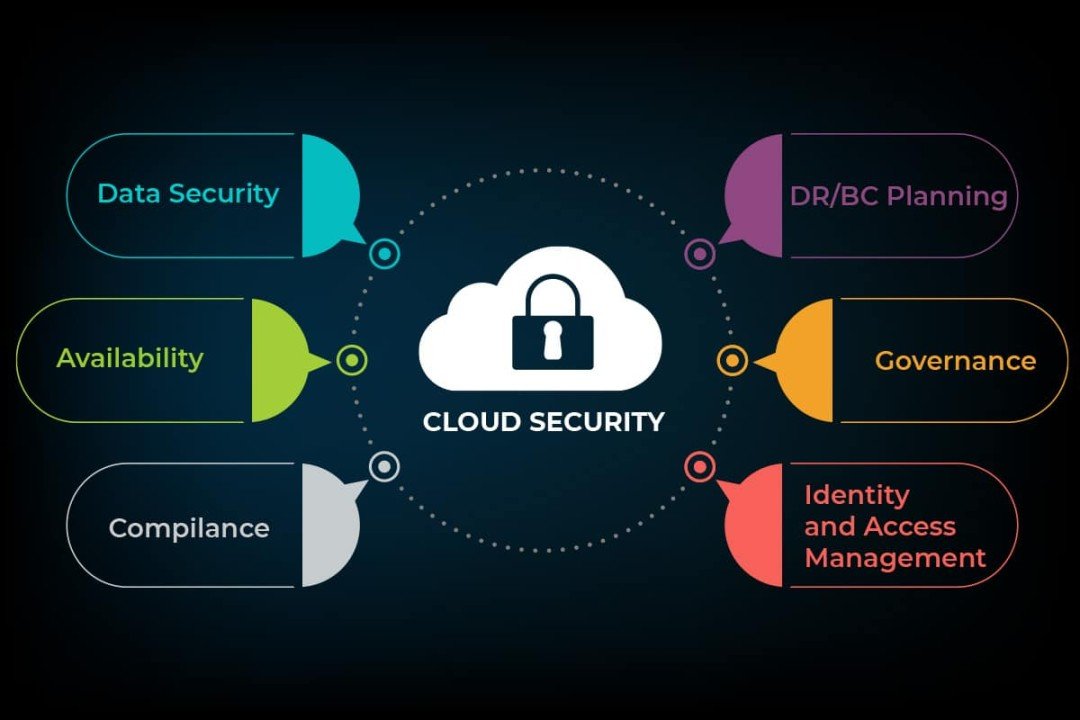The Invisible Storm: Why Cloud Malware Is Your Business’s New Weather Emergency
Remember when a storm warning meant boarding up windows and stocking up on batteries? For today’s businesses, the most dangerous storms aren’t brewing in the atmosphere but forming in the cloud, where a new generation of malware threatens to rain devastation on unprepared organizations.
Protecting your business from cloud malware requires a fundamental shift in security thinking, as traditional defenses simply weren’t designed for these sophisticated airborne threats.
Without proper safeguards, your organization remains vulnerable to attacks that can compromise data, disrupt operations, and damage reputation in ways never before possible.
Cloud computing promised blue skies and sunshine: flexibility, scalability, and cost savings. And it delivered.
But as businesses rushed to migrate their operations skyward, cybercriminals followed, developing sophisticated attack methods specifically targeting cloud environments.
The Changing Weather Pattern
The cybersecurity forecast for 2025 shows concerning trends. Traditional malware hasn’t disappeared but evolved, becoming more sophisticated and increasingly cloud-focused.
Today’s threats don’t just target individual devices; they exploit the interconnected nature of cloud systems to spread rapidly across entire organizations.
Recent research by Cloud Storage Security identified SnakeKeylogger, RustyStealer, and Mirai as the top three malware threats detected in January 2025.
These aren’t just random storms they’re targeted hurricanes designed to exploit specific vulnerabilities in cloud environments.
SnakeKeylogger, for instance, isn’t content just stealing local credentials; it’s designed to capture cloud service login details, giving attackers the keys to your digital kingdom.
What makes cloud malware particularly dangerous is its ability to exploit the very features that make cloud computing attractive.
The same interconnectivity that allows your team to collaborate seamlessly also enables malware to spread efficiently.
The remote accessibility that supports your work-from-anywhere policy also gives attackers multiple entry points into your system.
When It Rains, It Pours
Cloud malware doesn’t just strike once it creates perfect storm conditions for multiple, cascading failures across your organization:
First comes the compromise: A single misconfigured S3 bucket or an overlooked permission setting becomes the eye of the storm.
In January 2025, executable files (ELF and EXE) accounted for 85% of malware delivery mechanisms, showing how attackers are targeting both Linux-based cloud servers and Windows endpoints.
Then, the spread: Unlike traditional malware that might infect a single machine, cloud malware exploits shared storage, identity systems, and APIs to move laterally through your organization’s cloud environment.
What starts as a small drizzle quickly becomes a downpour.
Finally, the damage: Data breaches, ransomware, stolen credentials, and even complete system takeovers.
The cleanup costs aren’t just financial they include reputational damage, customer trust erosion, and potential regulatory penalties.
Why Traditional Umbrellas No Longer Provide Protection
Conventional security approaches fall short against cloud malware for several critical reasons:
Shared responsibility confusion: Many organizations mistakenly believe their cloud provider handles all security concerns.
The truth? While providers secure the infrastructure, you’re responsible for protecting your data, applications, and access management.
This misunderstanding creates dangerous security gaps that malware exploits.
Complex identity management: Cloud environments rely on intricate identity and access systems that, if poorly configured, provide attackers with privileged pathways throughout your organization.
A single compromised OAuth token can grant persistent access to multiple SaaS applications, as demonstrated by attacks leveraging token abuse in 2024.
Detection-based limitations: Traditional security solutions that rely on known signatures struggle against the rapidly evolving nature of cloud malware.
By the time a threat is identified, it may have already caused significant damage.
Visibility challenges: Many security teams lack comprehensive visibility across their cloud ecosystems, making it difficult to detect unusual activities that might indicate a malware infection.
Building Your Cloud Weather Defense System
Protecting your business against cloud malware requires a fundamental shift in security thinking from reactive to proactive, from perimeter-focused to identity-centered, from detection to prevention.
Here’s how to weather-proof your cloud environments:
Embrace zero trust architecture: Assume breach conditions at all times. Verify every access request, limit permissions to the minimum necessary, and implement continuous authentication. Trust nothing, verify everything.
Deploy cloud-native security tools: Traditional security solutions weren’t built for cloud environments.
Cloud-specific tools designed to monitor containers, serverless functions, and cloud-native applications provide specialized protection against emerging threats.
Implement runtime protection: Don’t just scan for known threats prevent malicious behaviors before they execute.
As seen in recent research, malware increasingly uses multi-stage deployment techniques to evade detection, making runtime protection critical.
Automate security responses: Cloud environments are dynamic and vast. Manual monitoring is insufficient.
Automated systems can detect anomalies, isolate affected resources, and respond to incidents in real-time, limiting malware’s ability to spread.
Train for the storm: Your team needs to recognize the warning signs of cloud malware.
Regular security training that specifically addresses cloud threats creates a human firewall against social engineering and phishing attempts that often initiate attacks.
The Future Forecast
The cloud malware landscape continues to evolve rapidly. Looking ahead, several trends demand attention:
AI-powered attacks: Cybercriminals are increasingly leveraging artificial intelligence to create more sophisticated malware capable of adapting to security measures and blending in with normal cloud operations.
Supply chain compromises: Rather than attacking your cloud directly, attackers are targeting the third-party services and dependencies your cloud applications rely on, creating backdoors into otherwise secure environments.
Edge computing vulnerabilities: As cloud computing extends to the edge, new attack surfaces emerge. Distributed cloud resources create additional entry points for malware designed to exploit edge computing’s unique architecture.
Cryptojacking evolution: Cloud resources provide the perfect target for cryptomining malware, which can now spread across interconnected cloud workloads, stealing computational resources while remaining hidden.
The Business Case For Cloud Weather Preparedness
The cost of cloud malware goes beyond immediate technical damage. Recent ransomware attacks targeting cloud environments resulted in average remediation costs exceeding $4.5 million per incident.
That doesn’t include the harder-to-quantify costs: lost business opportunities, damaged customer relationships, and eroded market confidence.
Smart businesses recognize that cloud security isn’t just an IT expense it’s business continuity insurance. Every dollar invested in cloud malware prevention potentially saves ten in recovery costs.
Consider the case of a major logistics company that suffered a cloud ransomware attack in late 2024.
Despite having traditional security measures in place, attackers compromised poorly secured S3 buckets, encrypting critical operational data.
The company faced a three-day operational shutdown, costing millions in lost revenue and requiring extensive recovery efforts.
In contrast, companies that implemented proactive cloud security measures have demonstrated remarkable resilience against similar attack patterns.
Clearing The Skies
Cloud malware represents a significant but manageable threat.
By understanding the unique characteristics of cloud-based attacks, implementing appropriate security measures, and fostering a security-conscious culture, businesses can continue enjoying the benefits of cloud computing while minimizing risks.
The question isn’t whether your organization will face cloud malware threats it’s whether you’ll be prepared when the storm hits.
Weather forecasters can’t prevent hurricanes, but their warnings save countless lives.
Similarly, security professionals can’t eliminate all cloud threats, but with proper preparation, they can significantly reduce their impact.
As you continue your cloud journey, remember: blue skies are possible, but only for those who take cloud weather warnings seriously.
The time to prepare isn’t when you see the first raindrops it’s now, while the horizon still looks clear.
- By Shanthi vineela
- 2





